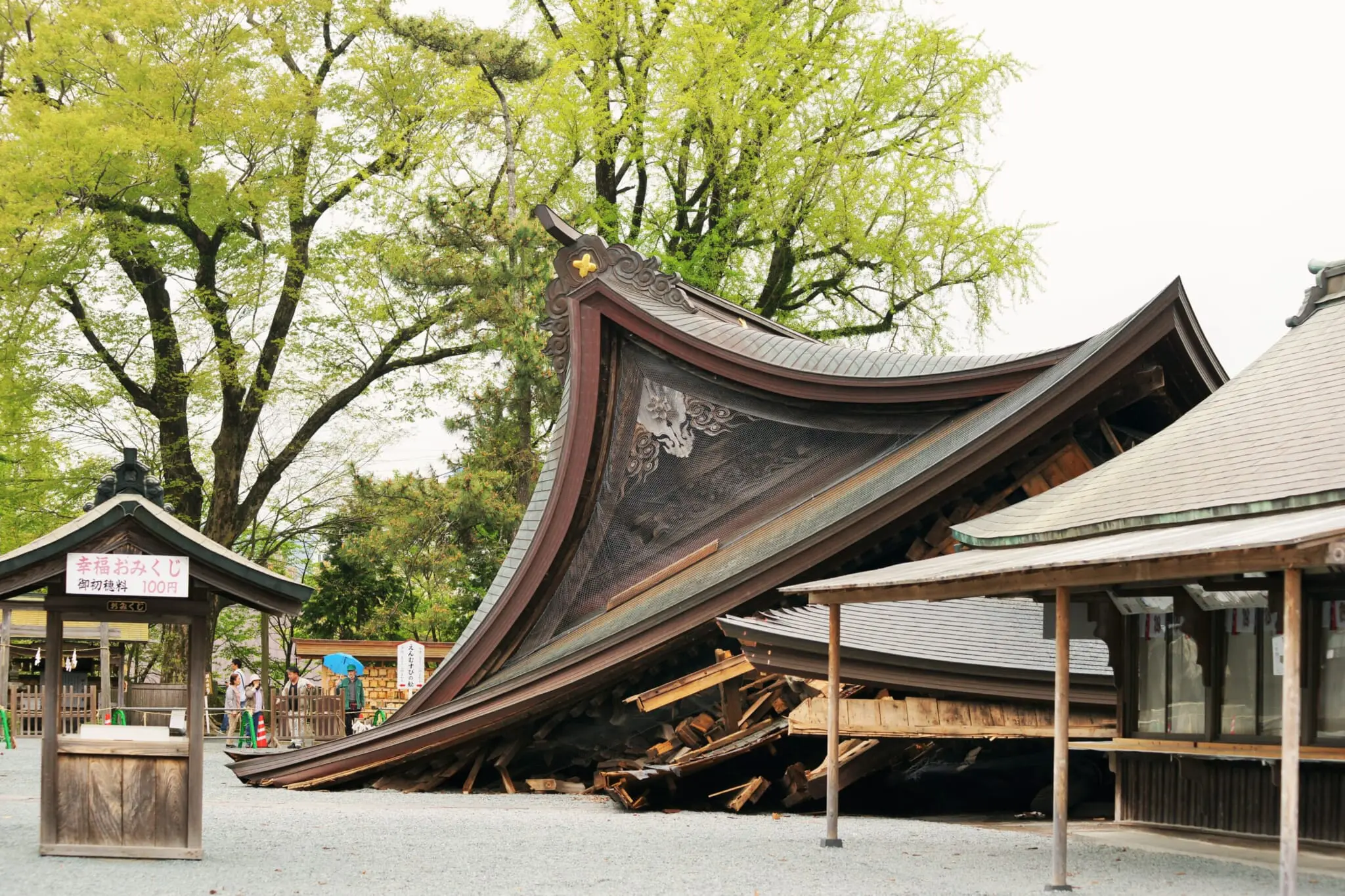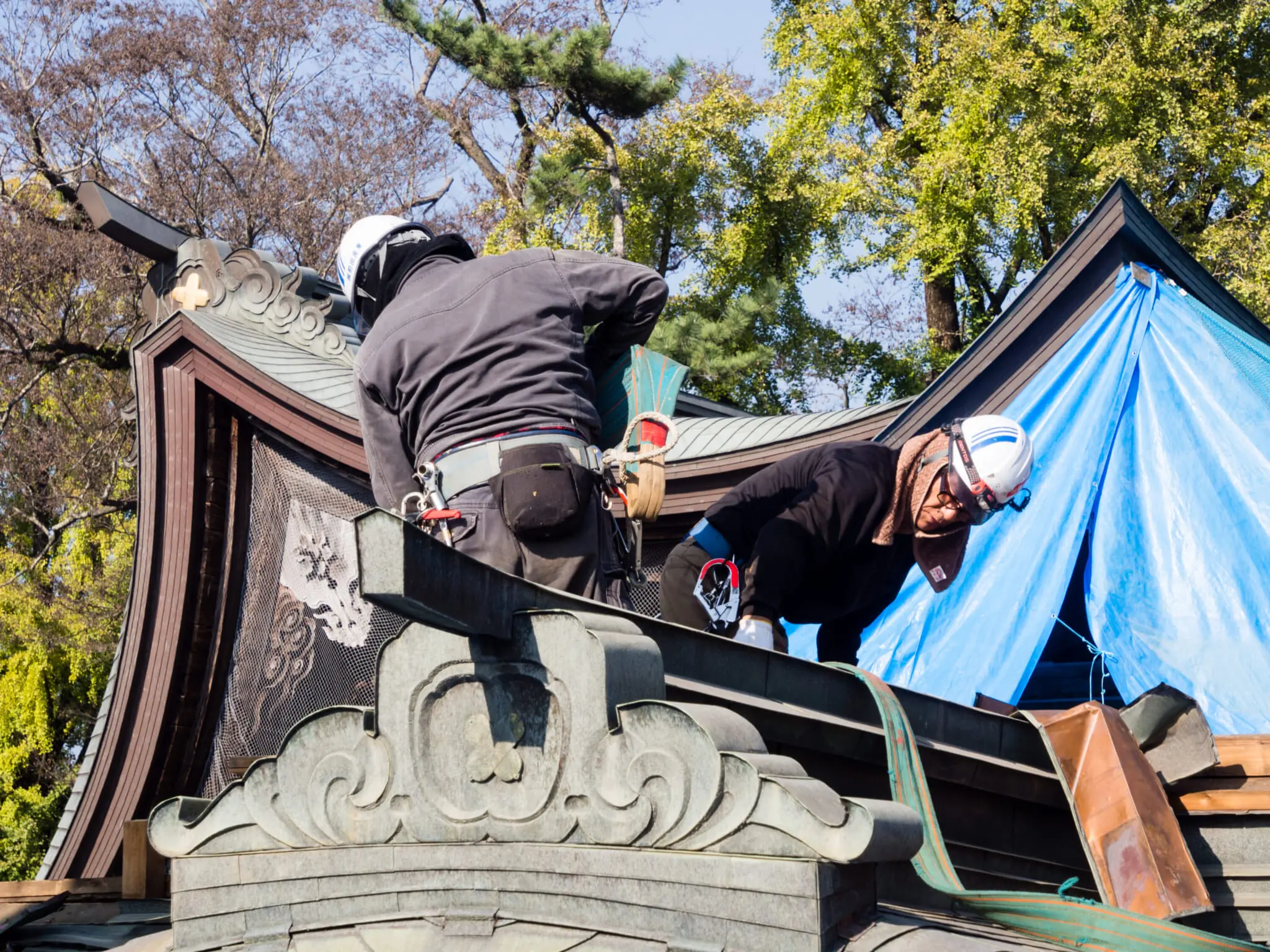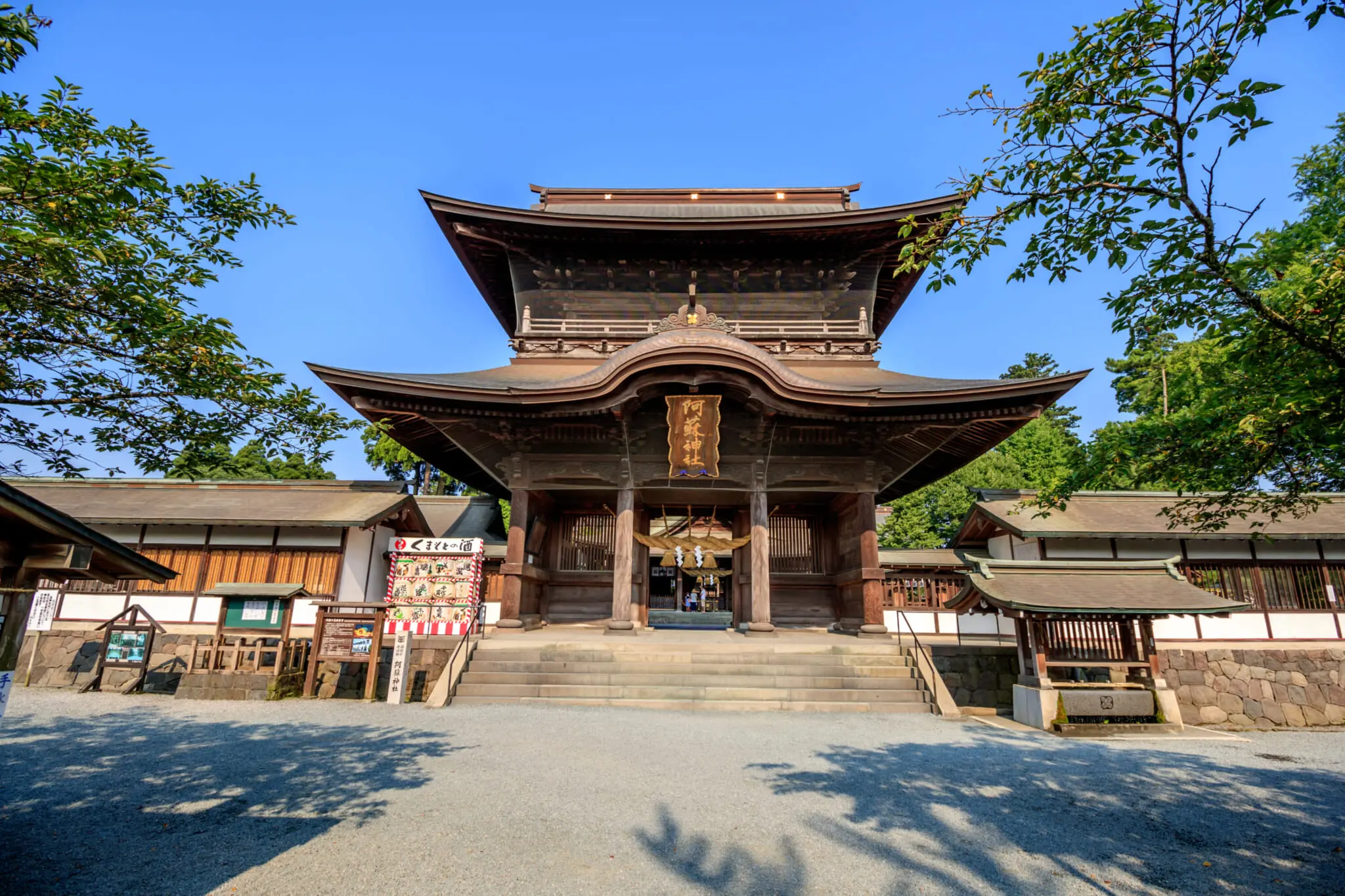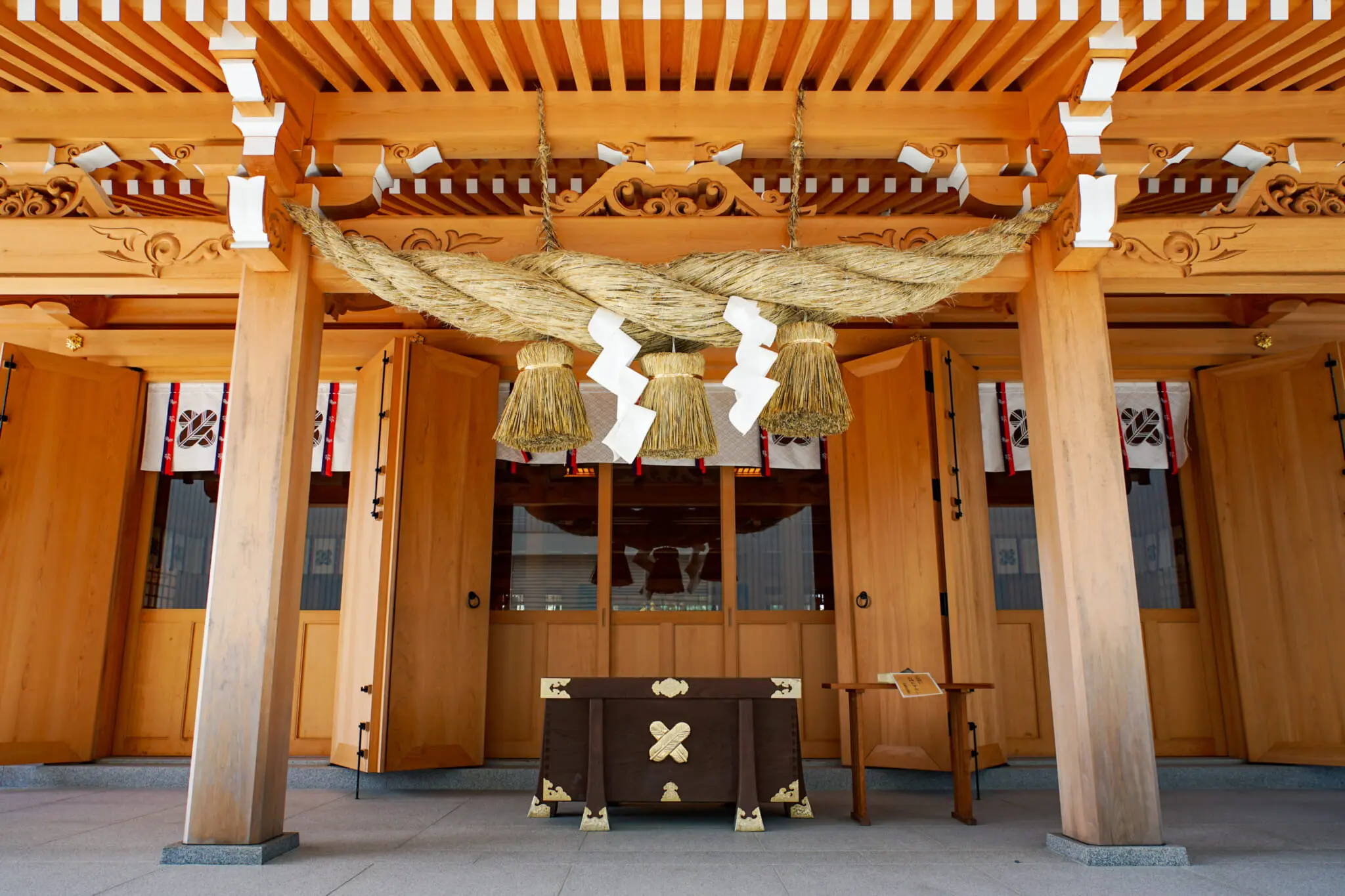With a history of over 2,000 years, Aso Shrine has long been considered one of the most prestigious shrines in Kyushu. Since ancient times, the shrine has been fused with the volcano worship that deifies the crater of Mount Aso, and has for centuries been revered as the main shrine of Higo Province (now known as Kumamoto Prefecture). Its two-story Romon gate is especially well known for being one of Japan’s three major tower gates, and the largest in the Kyushu area.
On April 16, 2016, the shrine was heavily damaged in the Kumamoto Earthquake, and its famed gate was completely flattened. It was a heavy loss for the local community, as the sacred spot is, in many ways, the heart of their town. The restoration process has been long and painstaking, involving the rebuilding of six historical buildings designated as important cultural properties. But finally, on December 7, 2023, the fully restored Romon gate was unveiled with some modern adjustments — a symbol of resilience and recovery.

Disaster Strikes
In April of 2016, a pair of powerful earthquakes struck Kumamoto Prefecture, causing widespread damage. People in the region were completely caught off guard, recalls Masahiko Nakashima, who was born and raised in Aso and happened to be visiting his parents’ home from Tokyo at the time. “We had no reception after, and couldn’t get any information,” he said.
The following morning, Nakashima and his family learned that the shrine had been flattened. They were devastated. “I had my wedding there, and so did my parents. My 87-year-old grandmother even cried to me that she couldn’t die without going through the Romon gate to pray one last time.”
Many other locals felt the same way; the ancient shrine was an ichinomiya, the highest-ranking shrine of the Kumamoto area, but also the soul of Aso. As people started helping each other remove rubble from their homes, they wanted to do the same for the shrine, but they were unfortunately stopped. As much as they wanted to take action, no one was permitted to touch the historical buildings in the area, as most were designated as important cultural properties, meaning only trained professionals were allowed to step in.
“It shattered my heart to only be able to just watch,” said Nakashima, who produced a series of short documentaries about the restoration work. “I felt the need to help in some way. I wanted to let my grandmother go through the shrine gate once again.”

A Restoration Project With Widespread Support
Six months after the disaster, the restoration of Aso Shrine began with the help of donors from all over the country. Nakashima joined as a volunteer to document the ongoing construction, allowing others to learn more about the process of recovering from the earthquake’s devastation.
“It was amazing watching the miyadaiku (Japanese carpenters who specialize in temples and shrines) work,” he said. “To be honest, I didn’t expect them to restore the Romon gate this well, with so many of the original materials.”
The rebuilding process was complicated by the fact that there were no remaining blueprints for the gate, which was built close to 200 years ago during the Edo period. However, thanks to locals and past visitors, experts were able to carefully recreate the structure using hundreds of donated photos taken over the years. As much of the original was conserved as possible, and irreparably damaged parts were replaced with domestic wood close to the original with the help of local forestry organizations.
As a result, the restored gate is composed of around 70% of the original structure, with modern adjustments — it’s now reinforced with steel to protect against future earthquakes. When the construction was finally completed in December, it felt like a moment of triumph. “My now 94-year-old grandmother was absolutely thrilled to walk through the restored gates,” said Nakashima. “I could not have been happier.”

Restoration to Continue
Although the gate has been restored, other areas of the shrine remain damaged and in need of repair. Donations are always welcome, as is visiting the site in person. Make sure to look closely at the gate when you go, to see where the new wood was inserted, designed to blend in with the original gate as time passes, as well as all kinds of old marks and scrapes that tell the many stories of the historical monument.
This article appeared in Kyushu Weekender 2024. To read the whole issue, click here.









